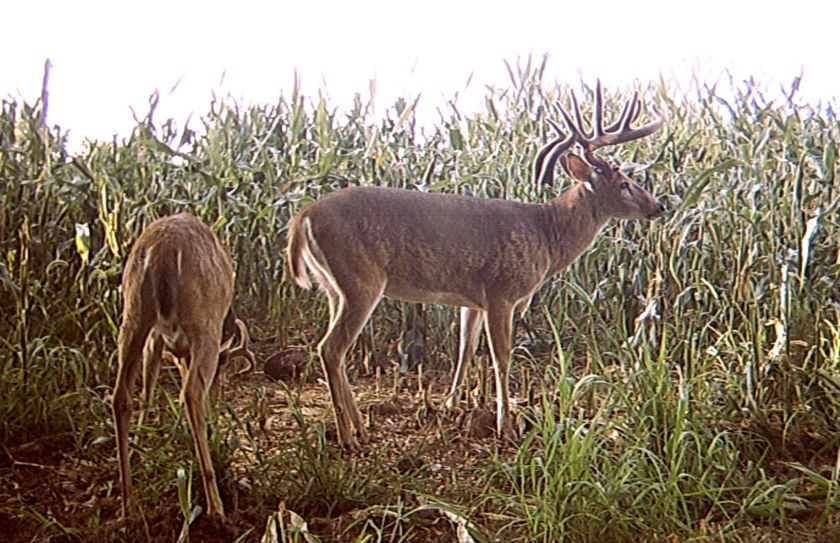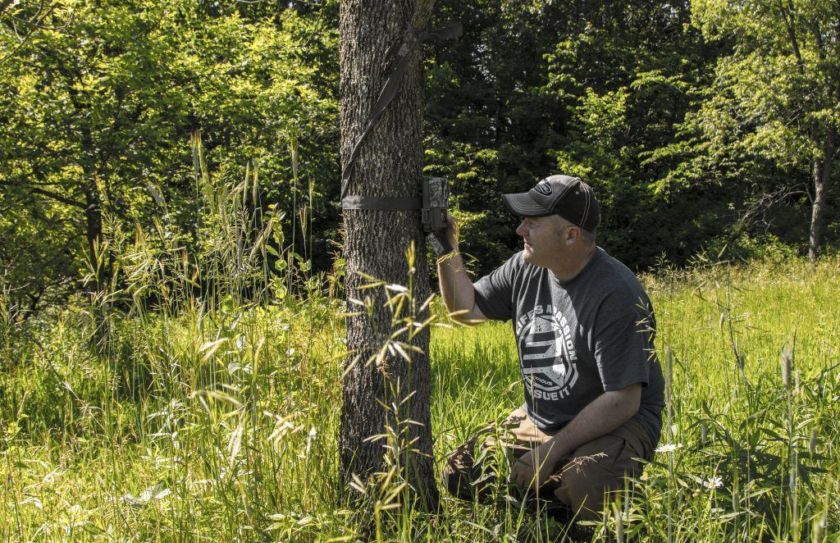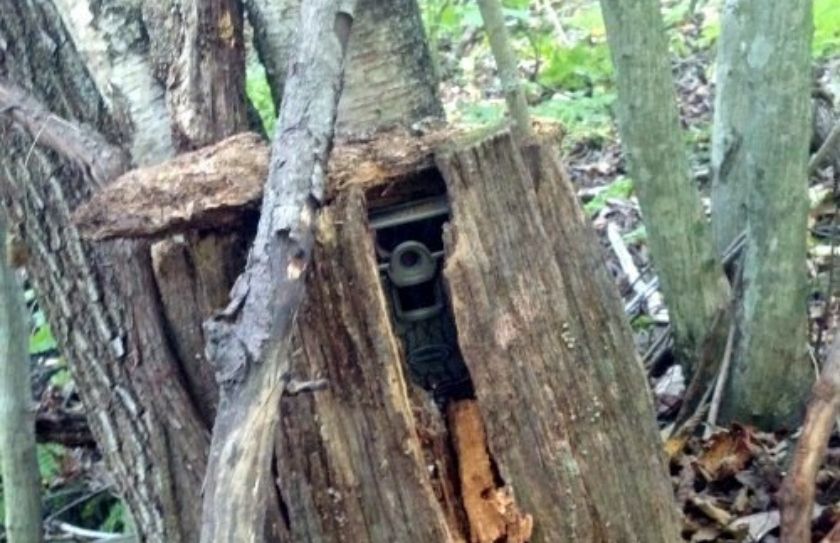Do you remember when the development of 1 hour photo processing was a big deal? I do, because no longer did I have to wait 24 hours or more to discover what was on a 36 exposure roll of film; it was incredible! All that I had to do was drop off the film, go grocery shopping, grab some lunch and it was already time to see what I had captured on film. Sometimes what I captured were 36 pictures of moving branches, but most of the time there were pictures of at least some kind of critter. The process was a lot of fun! Well, not only has the technology changed since the late 90s, but so has the level of trail cam strategies that hunters can use to more accurately and effectively discover what is actually hidden in the woods.
Can you find the trail cam in the picture below? That's a picture of one of my favorite trail cam strategies!
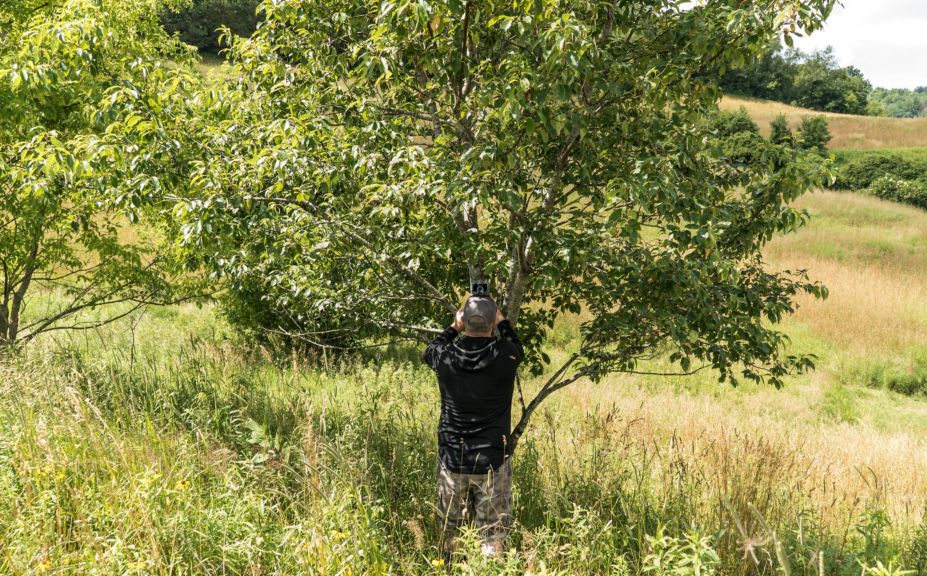
Throughout the years, various trail cam strategies have been discovered for various reasons:
1. Technological advancements have allowed for extended periods of time for trail cams to hang in the woods, while capturing the potential of thousands of pictures over the course of a few weeks or months.
2. Trail cam theft is rampent in some areas, while also being a never ending concern on the vast majority of hunting parcels. There are two types of trail cam users out there, including: Those who have already lost a game cam (or more) due to theft, and those who will.
3. As the focus of hunting older bucks has increased, so has the need for a more potent set of trail cam stategies for hunters looking to capture pics, without spooking their target.
4. Various habitat improvement practices have created the ability for easier ways to photo a more accurate reflection of a localized buck herd.
While I love to cruise the back roads in search of one of the area's giants and always enjoy seeing a monster while sitting on a deer stand, there is nothing that can replace the value of a trail cam when it comes to the ultimate scouting tool. Since the late 90s I have used trail cams to spook deer, pattern deer, and have even had game cams stolen and vandelized while searching for deer. During those same years I have navigated through the journey of lantern batteries, film and flash, to lithium, SD and blackout IR, while capturing pictures of over 80% of the bucks I have harvested.
*Make sure to check out my whitetail book series including, "Whitetail Success By Design" and "Food Plot Success By Design", to help you find mature bucks this hunting season!
Top 10 Trail Cam Strategies
To say that trail cams are fun to use would only be reflecting a fraction of what they can ultimately contribute to your entire herd, hunting and habitat efforts. Here are my top 10 trail cam strategies that you can use this season:
1. Hang Em High
During the IR era, I quickly learned that deer did not care for the red glow of the IR bulbs. Although the best solution has come with the advent of backout flash varieties, another great strategy is to place a camera high in a tree. By using a commercially created trail cam arm or by simply using a stick as a shim to create the appropriate angle, a trail camera can be placed well above the site-line of a whitetail deer. At the same time the increased elevation can offer the perfect position for a long distance view of a food source or large mature hardwoods. Try placing a mineral lick or waterhole off to the side of the game camera so that as a passing deer sets off the camera, a picture is captured from a very large area, including the background.
2. Treestand Access
One of the most common questions that I get regarding trail cams is, "How often do you change your cards during the hunting season?" To me there is no set, appropriate amount of time. Instead, I suggest that you change your trail cam SD cards while on the way to one of your treestands. Unless during a major rains or snow storm, accessing a game cam while already in the woods to hunt is a great opportunity to check your cameras without adding hunter scent, sound or site.
3. Waterholes
Waterholes are one of the most defined mature buck stopping points that can be installed on a "dry" hunting parcel. With that being said, why not add a trail cam? While some hunters do not advocate the additional level of hunting pressure created by placing a camera near a waterhole, I see a great opportunity! Remember, I typically only access a game camera while on the way to a treestand, so when I hunt the bowstand while waiting to ambush a buck hitting the water, I change the card.
Deer typically only visit waterholes during the afternoon, after sitting in "dry" bedding areas all day. After feeding on green vegitation all night their moisture needs are typically met to a level that decreases their need to take a drink. However, you will know when the rut begins in your area when your morning and mid-day buck pictures heat up! A trail cam can be a great way to keep tabs on the beginning of the rut.
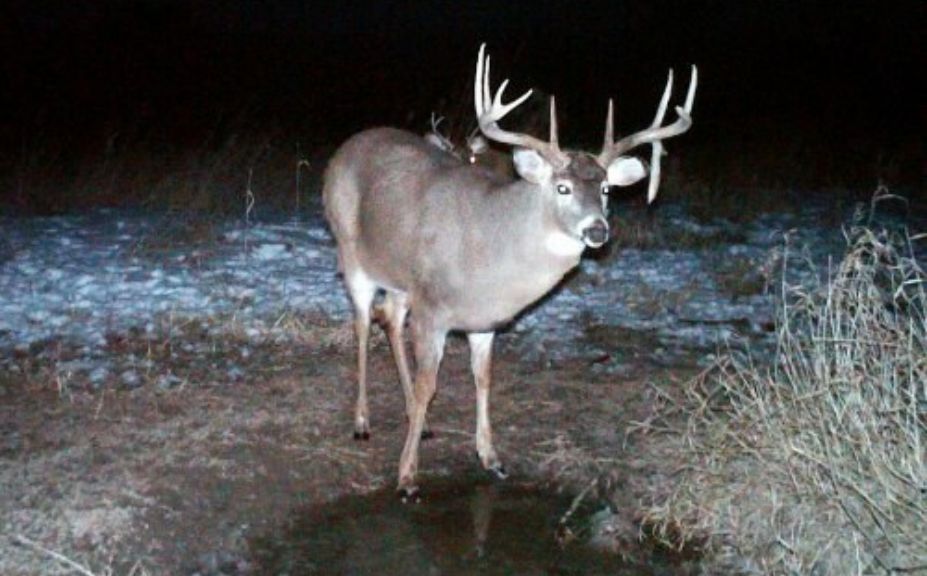
*Using a waterhole game cam placement can often provide you with a glimpse into the secret movements of a mature buck, and by only accessing the SD card when you use your bowstand nearby, no additional hunting pressure needs to be applied. For more tips for creating non-invasive trail cam locations, check out"The Spook Proof Deer Cam Guide".
4. Easy in, Easy out
By placing trail cams between well known bedding areas and the beginning of a food source, you can often give yourself a great spot to get in and out of your land to grab an SD card, without disturbing either the food soruce, or bedding areas. Deer are typically in their travel routes for only a brief period of time, drastically decreasing the potential of spooking them.
By having several easy in/easy out trail cam locations, you can often check your game cams prior to an evening sit. This can greatly help you narrow down exactly where to sit to take advantage of a target buck that may be residing in only 1 location on your land.
5. Central Food Source
Placing a camera in a large open food source should allow you to keep tabs of a huge number of deer, while at the same time offering you the potential for another non-invasive, "easy in, easy out" camera location.
6. Natural Hiding Spots
Old stump shells, vines and branches can be great features for hiding a trail cam!
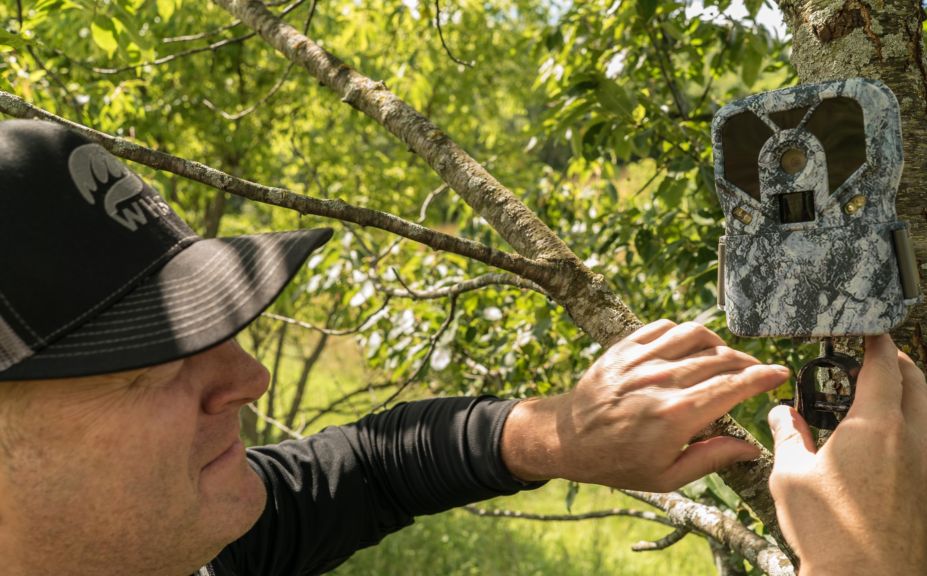
*Making sure that your trail cams aren't discovered by deer or trail cam thieves can easily be accomplished! If you prefer the stealthy, more natural way to hide your cams, check out"Top Tips To Hide Trail Cams".
7. Core Vs. Non Core
Does that mature buck you are after rarely show his face during anywhere close to the hours of daylight? Does he show himself consistenly throughout shooting hours during several days of the week?
8. Buck Numbers
You will be surprised how many bucks that you capture on a trail camera, in particular with several well placed positions designed to take advantage of each major movement on the land that you hunt. Through my experience with 100s of clients in 19 states throughout the years, many are consistently shocked at the number of bucks that they do not see during the hunting season.
9. Mature Buck Bedding
As a buck matures, his daytime security area often becomes highly defined, while at the same time decreasing in size. A trail cam will tell you which buck, is living in which daytime bedding area. The travel patterns that you discover during the season, will often repeate themselves for years at a time. Even if an old legend is killed another buck will eventually take over his daytime hotspot, with your trail cams often being the #1 way to scout your bedding areas during the season.
10. Trespassing Patrol
What can be better than narrowing down the patterns of a monster buck? Discovering the patterns of a trespasser! I have often told my friends and clients that I would trade a year of mature buck hunting on particular chunk of land to catch a thief; would you? By hiding your cams with natural materials and using an elevated position, it can become fairly easy to not only find create a great trespasser trap, but to create a great set-up for narrowing down the travel habits of a mature buck.
*Bonus Tip: Your trail cam strategies amount to nothing without a camera that you can count on. For the best Trail Cam Warrantyin the industry for the most dependable cameras, make sure to check out Exodus Trail Cams.
Conclusion
The particular set of trail cam strategies that you use each season, often reveal a window into the level of your future level of potential success. Not only are trail cams still a lot of fun to use, but along the way they have provided an incredible amount of insight into mature buck behavior, new hunting strategies and how the local deer herd is relating to (or not) new habitat improvements. Whether your goal for this season is to increase your fun on the lands that you hunt, or to drastically improve your ability to hone in on a monster buck, don't overlook the variety of ways to use trail cam strategies to help you find your ultimate level of success.
